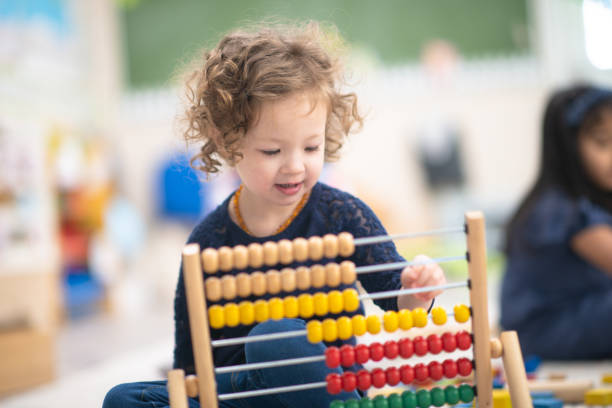In the environment prepared in Montessori education, it is very important to reveal whether the preschool child is ready to learn without prejudice and to provide learning tools to meet the inner learning needs of children. If children receive appropriate help, they can meet these needs and fulfill the assigned task with an astonishing intensity of participation and concentration. They perform these activities, which are very meaningful to them, not to please the teacher, but because of the need to learn. The acquisition of knowledge is an exploration, and they develop a love of work with respect for the environment that provides them with resources. Every material presented to children is experienced as a conquest, the formation of a new function. Children’s minds are strengthened and their satisfaction increases. Presenting abstract concepts that are only verbally explained to children with concrete materials facilitates the processing and transfer of knowledge. Children gain insight into the concept presented with developmental Montessori materials and make a personal discovery. Repetitions continue until this concept is fully assimilated.
Mathematics Materials
Maria Montessori developed the mathematics education method based on sensory education and determined its principles. In the Montessori method, children learn the concept of “quantity” that these numbers represent, rather than just counting numbers. Various materials are used to visualize numbers. The aim is to enable children to understand mathematics and quantity through their visual perception and physical experiences. Maria Montessori understood that mathematics education was accepted more easily by young children than language education and presented concrete mathematics materials to children.
Montessori added mathematics to the education system, realizing that children easily learn everything that happens around them during the 3-6 age period, which is the “sucking mind” period, as a result of studies with daily life and sensory materials. According to Montessori, every child is born with the ability to think and learn basic mathematical concepts. For this reason, if the basic mathematical concepts are introduced by using the appropriate tools correctly in the absorbent mind period when the child is willing to learn, there will be no difficulty in learning mathematics.
Montessori mathematics materials are designed to support mental development, which is given in a certain order, gradually, and which enables abstract thinking with the help of concrete materials and helps problem solving. Mathematics materials allow children to progress on their own with logical progression rules. With these materials, children see numbers, the amount represented by the number and the four basic mathematical operations in a concrete way and have the opportunity to experience them with their hands. Thus, children learn mathematics in a fun way within a sequential program. Montessori materials allow the child to embody abstract concepts and develop their mathematical intelligence. Mathematics materials and applications made with them in Montessori classrooms are one of the areas that attract children’s attention, increase motivation and concentration. In Montessori education, mathematical concepts are presented gradually from simple to complex. Children measure, compare and analyze through experiences gained through working with sensory materials. Concepts presented to the child with mathematical materials help the child distinguish the size and quantity of the object.
Montessori materials not only support children’s acquisition of many skills such as talking to each other, watching while someone is working, waiting for their friend to finish their work, helping them when they need it, and delaying their requests, they also enable children to learn by observing each other. Thus, exercises with materials contribute to both cognitive and social development of children.
The symbols taught to the child through mathematical materials are the alphabet of mathematics. Mathematics materials were ordered from simple to difficult and cascaded under four groups. Studies with materials classified as the first group of mathematics materials are presented to the child in an order that will enable them to learn basic mathematical concepts such as recognizing numbers from 1 to 10. The other group of mathematics materials are presented to children who gain basic mathematics concepts in a sequential manner.
